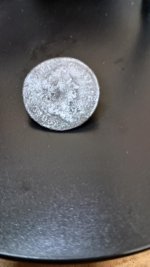uniface
Silver Member
Early Tennessee Textiles & Basketry
I downloaded a pdf file that is chapter three of something. Unfortunately, I don't remember of what. Of interest to Tennessee folk :
Chapman’s work in Tennessee also provided direct evidence of the production and use of
textiles in the Early Archaic period. The evidence was recovered as impressions of basketry and
woven fiber bags from a prepared clay hearth. The context in which they were found can be
firmly dated to the Early Archaic (Chapman 1977).
I downloaded a pdf file that is chapter three of something. Unfortunately, I don't remember of what. Of interest to Tennessee folk :
Chapman’s work in Tennessee also provided direct evidence of the production and use of
textiles in the Early Archaic period. The evidence was recovered as impressions of basketry and
woven fiber bags from a prepared clay hearth. The context in which they were found can be
firmly dated to the Early Archaic (Chapman 1977).
Upvote
0





